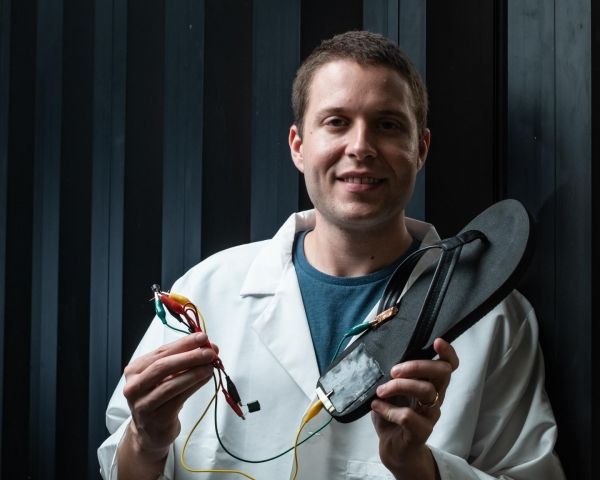Wearable devices that harvest energy from movement are not a new idea, but a material created at Rice University may make them more practical.
The Rice lab of chemist James Tour has adapted laser-induced graphene (LIG) into small, metal-free devices that generate electricity. Like rubbing a balloon on hair, putting LIG composites in contact with other surfaces produces static electricity that can be used to power devices.
For that, thank the triboelectric effect, by which materials gather a charge through contact. When they are put together and then pulled apart, surface charges build up that can be channeled toward power generation.
In experiments, the researchers connected a folded strip of LIG to a string of light-emitting diodes and found that tapping the strip produced enough energy to make them flash. A larger piece of LIG embedded within a flip-flop let a wearer generate energy with every step, as the graphene composite’s repeated contact with skin produced a current to charge a small capacitor.
Read more at Rice University
Image: Rice University postdoctoral researcher Michael Stanford holds a flip-flop with a triboelectric nanogenerator, based on laser-induced graphene, attached to the heel. Walking with the flip-flop generates electricity with repeated contact between the generator and the wearer's skin. Stanford wired the device to store energy on a capacitor. (Credit: Jeff Fitlow/Rice University)


